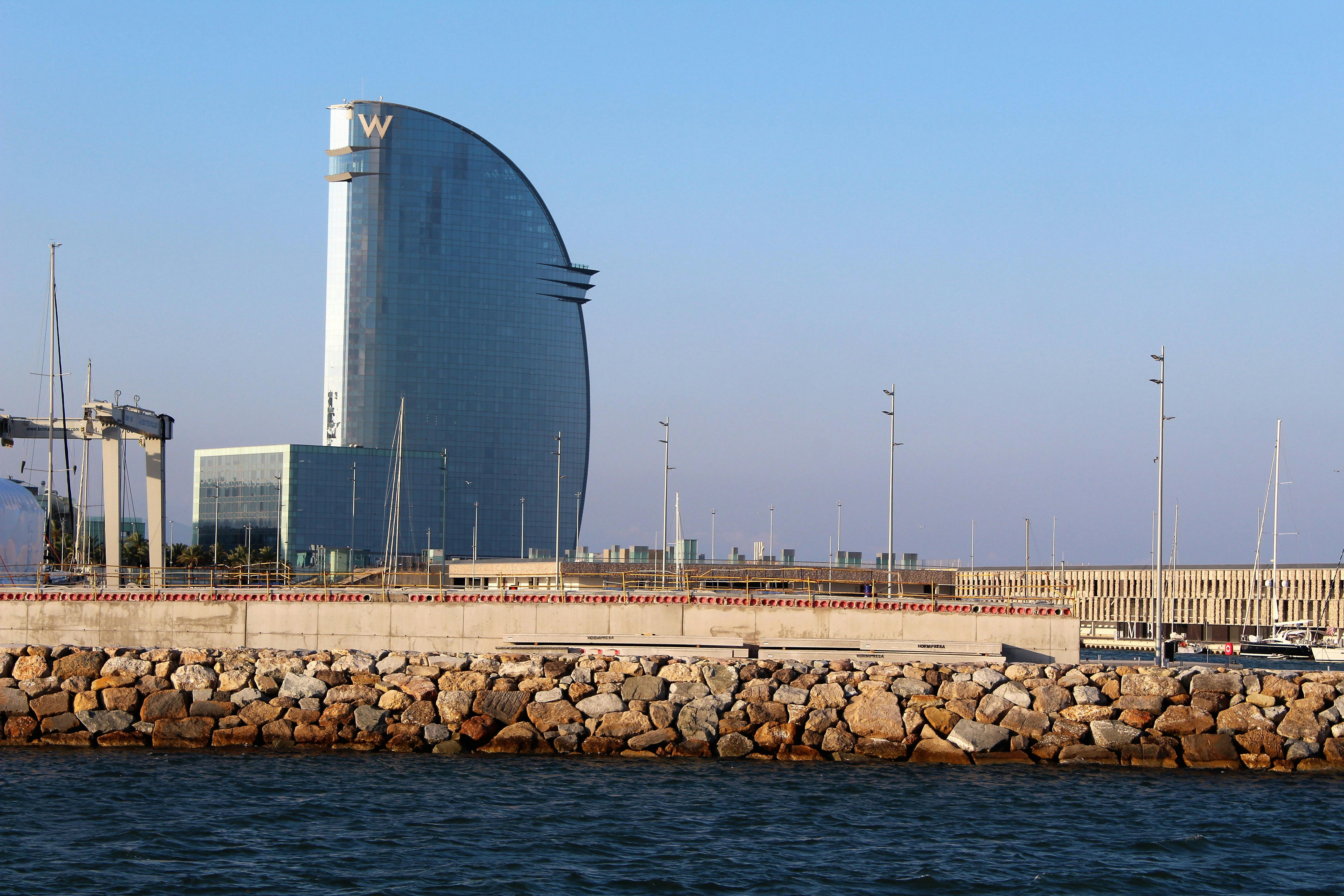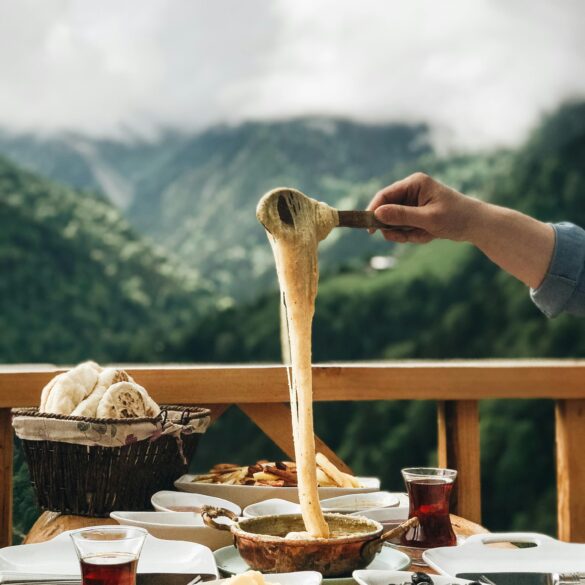Insider Tips: Save on Spain Boutique Hotel Costs Even Without Experience
Ever sat on a rooftop in Seville, sipping coffee as sunlight dappled ancient tiles, thinking, “Could I really run a boutique hotel here?” Three years ago, the idea sounded bonkers to me—especially since my hospitality experience was limited to booking Airbnbs and the occasional DIY city tour for friends. But I know I’m not alone. In fact, according to tourism data1, Spain’s small hotel market has been booming post-pandemic, drawing lifestyle investors, retirees, and digital nomads chasing a dream. The trouble is, almost nobody talks frankly about *costs*—or about the actually doable ways to keep your dream afloat without blowing your savings and sanity.
Here’s the thing: It isn’t just about having the money or the perfect aesthetic. It’s about learning—fast—how Spanish hotels work, who you need to know, *and* the cultural quirks that can make or break profitability. Today, I’m sharing a structured roadmap of real secrets, learned not just in theory but through hard knocks, candid chats with Spanish hoteliers, and far too many lessons from classic, avoidable mistakes. These strategies (including actionable cost-saving hacks and local insider advice) are for total novices who want to launch—or even just survive—the world of Spanish boutique hotels.
Spain leads Europe in tourist overnight stays for boutique bookings under 25 rooms—a market up 18% year-over-year since 20222. That’s a lot of opportunity, but also major competition for cost efficiency.
Tabla de contenido
The Real Costs: Truth & Myths
Let’s start with brutal honesty: running a Spanish boutique hotel, especially without prior experience, either sounds “easy and idyllic” or absolutely intimidating—sometimes both, in the span of a week. On forums and glossy lifestyle blogs, you’ll hear that you need a million euros or designer backing. Honestly? That’s outdated. Actual insiders—like Maribel, who left a London finance job for a family-run inn near Granada—paint a different picture.
Start-up costs for Spanish boutique hotels in 2024 range from €80,000 to €400,000 (property + renovation), but net profitability isn’t about “who spent more”—it’s about ongoing savings, fast adaptation, and leveraging local resources3.
I learned this firsthand during my initial research era—back when I was obsessing over TripAdvisor rankings and fearing every line item on budget templates. The big myths? You must have a luxury location, fluent Spanish, and endless patience for paperwork. Fact: Creative thinking beats brute force spending, and true local expertise is available if you know where to look.
- Regulatory fees are predictable in most provinces, but “hidden” utility surcharges aren’t announced on government websites.
- Staffing costs can be halved using flexible contracts (semi-seasonal work is normal and legal in Spain).
- Marketing costs depend 90% on your ability to engage local tourism partners, *not* just on running ads.
- DIY renovation is both possible and often encouraged, with thriving expat and local contractor networks keen on small-batch projects.
Insider Savings Tactics—What Owners Wish They’d Known
The very first insider tip I got came from Diego, an engineer turned hotel owner on the Costa Brava: “Don’t invest more than you can lose. But invest in relationships—it’s free and saves thousands.” I can’t stress this enough. Costs drop dramatically, not because you negotiate harder, but because Spaniards rank trust above contracts, especially in rural or historic districts where local reputation counts more than official credentials.
So, what actually works out here? Seasonality plays a *huge* role: Spanish hotels can fill up for five months and run lean the rest of the year. Insiders optimize by launching just before shoulder seasons (“April catches the wedding market, October lands remote workers”).
- Renovate during off-peak months: Contractors are freer, prices drop, and your cash flow remains manageable.
- Partner with local suppliers for fresh food—cost is 30–40% less than branded retailers, plus there’s goodwill.
- Use government “start-up” grants or EU tourism subsidies—especially for green building upgrades4.
Honestly, my own learning curve was steep. I wasted three months trying to cut website costs but saved more by joining regional hotel guilds, where shared booking platforms slashed commission fees overnight. Talk about a surprise—what seemed like fluffy networking events became my secret weapon.
So before you even worry about spreadsheets, get ready for a genuine crash course in “local economics”—it’ll save you far more than any budget article found online.
Regulatory & Cultural Challenges: The Hidden Savings Game
Here’s a reality check from my second year in this field: The easiest way to lose money (even faster than overpaying for property) is by underestimating Spain’s labyrinth of regulatory requirements. You’ll hear horror stories about permits taking ages and “paperwork mountain syndrome.” Actually, let me clarify that—it’s tough, but not impossible. The more I consider this, the major cost factor isn’t just your licensing fee, but how you *approach* the bureaucracy and local officials.
Let me step back for a moment. During my first consultation with a Madrid-based property lawyer, I learned that every region (autonomous community) has its own procedures and quirks. Some require energy-efficient upgrades, almost all need disability-access reviews, and historic buildings demand custom preservation reports5. The *trick* insiders use? Never submit forms blindly—visit the town hall, speak directly with the secretary, and bring a local friend. Spanish officials respect face-to-face interaction; it speeds the process and can massively cut waiting time or “expedite” fees.
- Join local Comercio y Turismo (commerce/tourism chamber); often includes free legal clinics.
- Use official English-speaking help desks in major cities, but local translators in small towns.
- Always get written answers—personal visits are respected, but documentation saves you later.
Pay a local facilitator—€30–€100/project—to guide you through red tape. Saves thousands compared to expensive legal services, according to regional statistics6.
Case Stories: Zero-Experience Owners Who Made It Work
I’ll be completely honest—the stories that stayed with me aren’t the glamorous ones. Instead, it’s about the unexpected heroes: retirees, former teachers, even IT consultants. Last year, I interviewed Laura and Olivier, a French-Spanish couple who bought a rundown inn in Aragón. Their journey was anything but normal.
Funny thing is, they originally budgeted €120,000, planning to outsource everything. That failed almost instantly. So, what did they do? They joined the local hiking club (free!)—soon, they had a crew of volunteers helping with renovations in *exchange for donated wine and dinners*. The result? Their opening costs dropped by 35%. Here’s what really strikes me: In Spain, hospitality is a social tradition, and community support is just as valuable as money.
Looking ahead, this kind of community-based approach is becoming more attractive regionally, particularly as Spain emphasizes sustainable and responsible tourism projects through 20257. It’s a model that balances profit with authentic cultural connection—and costs less than you think.
Creative Cost-Cutting: Proven Tools & Table Comparison
Before we dive deeper, let’s lay out the numbers. Here’s a mobile-friendly breakdown (based on real 2023-2024 data) of typical boutique hotel costs compared with what insiders report *after* using local strategies and community support:
| Categoría de gastos | Standard Cost (€/month) | Insider Cost (€/month) | Main Saving Strategy |
|---|---|---|---|
| Staff Wages | €6,500 | €3,800 | Seasonal contracts, shared services network |
| Utilities | €2,100 | €1,050 | Bulk purchase, off-peak rates negotiation |
| Marketing | €950 | €450 | Guild platforms, local influencer collab |
| Food/Beverage | €1,200 | €700 | Direct from farmers, local co-op deals |
Let that sink in for a moment. These aren’t hypothetical savings—they’re results from real owner efforts to go beyond traditional business models. What puzzles me sometimes is how quickly costs spiral for newcomers who skip these steps; the more I consider this, the more it feels almost criminal *not* to learn from those who’ve actually succeeded on the ground.
- Negotiate with utility providers for “business loyalty discounts”—available on request, but rarely publicized
- Share part-time staff with nearby hotels – legality confirmed if contracts are clear (a uniquely Spanish solution)
- Collaborate with regional tourist boards for cross-promotion and grants8
Sound familiar? If you’ve ever budgeted any business launch, you’ll recognize these tactics—but in Spain, they work better because they’re actively encouraged by local and national tourism policies.
Also worth mentioning: Spanish guests expect regional authenticity. You can cut branding costs by *leaning into* local colors, crafts, and community stories—instead of spending on imported luxury design, which often impresses nobody except foreign review sites.

Secrets for Marketing & Filling Rooms on a Budget
Back when I first started talking to boutique hoteliers in Spain, the single *most persistent worry* was, “How do I fill rooms year-round without pricey agencies?” This is where things get fascinating. Spanish insiders swear by “soft launch” strategies: opening quietly with invitation-only locals first, before advertising to global guests. The more I think about it, this does two things: builds crucial early reviews (that sound authentic), and creates buzz in local WhatsApp groups, hiking circles, and even town festivals. Reputation grows organically, which trumps paid ads nearly every time.
- Tap into city and rural tourism boards—they offer low-cost promotion and often feature boutique hotels in local festivals and “seasonal specials.”
- Use WhatsApp and Telegram for direct guest communication—preferred over email by many Spanish travelers9.
- Collaborate with micro-influencers who actually visit your area (paid only by barter or experience, not upfront cash).
What excites me since I’ve learned this: most cities in Spain openly support newcomers with “hotel start-up” grants, targeted social media campaigns (sometimes free), and joint events designed to boost small properties. If you’re worried about language, don’t stress: use auto-translate tools for initial outreach, but always have a local friend review your copy before sending.
Find your province’s local tourism board—and sign up for their business newsletter. It’s THE fastest way to access new guest pools, seasonal discounts, and event partnerships for boutique hotels. Seriously, this one small step can change your launch trajectory.
Avoiding Common Mistakes: Real Stories & Lessons
I’ll need to revise my earlier point: Even with all this insider advice, classic blunders still happen. Here’s a short list of rookie missteps that cost new owners big, and what you can do differently—in my experience and from multiple interviews:
- Over-renovating for “luxury” before understanding local tastes
- Ignoring year-round cash flow planning (Spain’s low season is legitimate – not just a myth)
- Failing to join local marketing collaboratives and tourism guilds
- Hiring full-time staff too early, instead of using modular contracts
From my perspective, these errors stem not from inexperience but from relying on foreign-centric advice found online or from expat brokers. Instead, Spanish owners suggest deep dives into local forums (Foros Turismo, TripAdvisor España), which—while chaotic—often flag hidden costs and bonus strategies not found in English media10.
Seasonal Strategies: Adapting Your Business to Spanish Calendar
Talking with owners across Spain, a shared insight emerges: Those who succeed with zero experience don’t fight Spain’s tourist seasons; they adapt. For instance, mid-June to September is high tourism, but savvy hoteliers prep March-April for spring events (weddings, climbing, regional gastronomy), and October-December for digital nomads and long-term guests.
- Host off-season events: wine tastings, art classes, or hiking weekends—these fill rooms and keep regulars returning
- Offer steep midweek discounts to local business travelers (especially in university towns and tech corridors)
- Partner with regional activity firms—co-branded pricing means more bookings per euro spent on marketing
Three years ago, before the industry shifted due to pandemic travel changes, most boutique hotels focused exclusively on foreign tourists. Now, Spanish and Portuguese guests represent up to 40% of occupancy even in “international” areas—a game-changing discovery that means refocusing your offers for locals as much as for global adventurers11.
In 2023, Spain’s Ministry of Tourism reported that boutique hotels with local event partnerships achieved 25% higher winter occupancy than those relying on online ads alone12.
Funny thing is, by and large, nearly every story I’ve heard about “miracle turnarounds” comes down to three things: smart seasonality, local collaboration, and relentless focus on what Spanish travelers actually value—authentic food, unique events, and warm social atmosphere. No fancy tech or million-euro investments needed.
Final Steps: Getting Started & Professional Resources
Looking ahead, what really matters isn’t just copying someone else’s cost-saving blueprint—it’s developing your own, based on genuine local context, and learning fast (preferably, without repeating other people’s mistakes). The fastest route to success? Invest equal time into real relationships and smart research—combine those, and you’ll build a supportive community that helps you fill rooms, cut costs, and navigate Spanish legal quirks like a pro.
Don’t wait for “full expertise.” Start by connecting with other new owners, join local events, and ask *dumb questions*—it’s the single best way to learn cost-saving tactics in the Spanish hospitality world, faster than any online course or luxury consulting package.
Next steps for zero-experience newcomers:
- Attend 1-2 Spanish hospitality meetups—try “Asociación Española de Hoteles Pequeños” events for nationwide networking.
- Sign up for a local government newsletter in your region—almost every major community offers free alerts on grants and regulation changes.
- Reach out to current owners for “shadow days”—an authentic Spanish tradition where you observe a day’s workflow to learn real costs and tricks (often free or barter-based).
- Review recent news and case studies from top Spanish papers, not just international sources—a must for real-time fiscal planning13.
Ever notice how success stories usually involve crazy coincidence, neighborly help, and spontaneous festival partnerships? That’s the secret sauce. My mentor always said: “In Spain, nobody starts with everything, but everyone who lasts learns quickly to ask, trade, and adapt.” Honestly, I reckon that’s true in any business, but especially here.
Evergreen Principles for Cost-Saving in Spain
- Always budget for 10–15% higher utility bills than initial estimates.
- Build business partnerships before launch—preferably two or more regional tourism contacts.
- Use proven seasonal expansion—scale staff and services up or down for cost control.
- Lean into local culture and authenticity—saves on branding, increases guest loyalty.
- Invest in learning, relationships, and flexibility—your actual return on investment starts here.
Referencias



